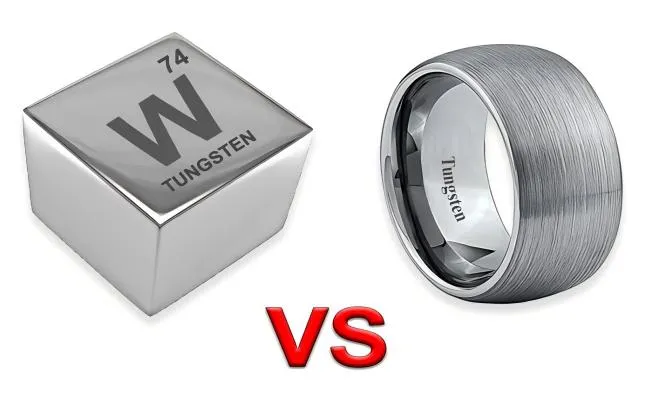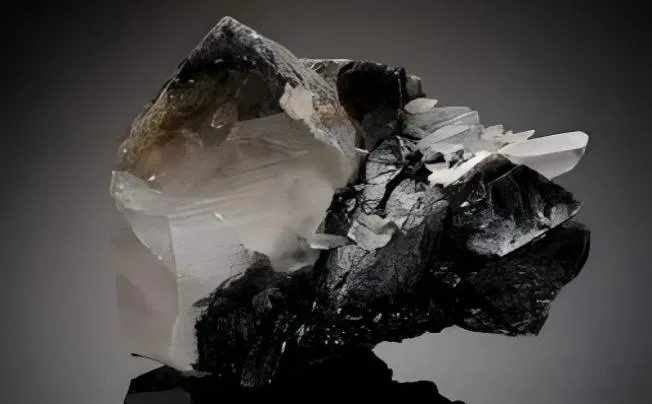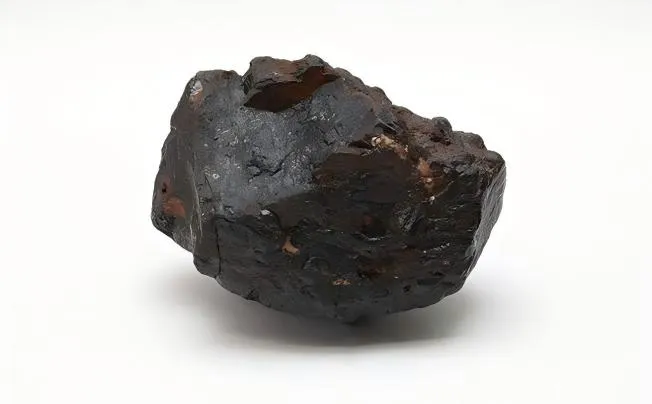The Enigmatic Alloy: Ferrotungsten
Ferrotungsten, a fascinating alloy composed primarily of iron and tungsten, stands as a testament to human ingenuity in metallurgy. This alloy is predominantly used in the manufacturing industry for its exceptional hardness and durability properties. Understanding the intricacies of ferrotungsten is crucial for engineers, scientists, and manufacturers alike, as it plays a pivotal role in various industrial applications.
Definition of Ferrotungsten
Ferrotungsten is a ferroalloy comprising iron (Fe) and tungsten (W), with tungsten content typically ranging from 70% to 80%. The alloy's composition can vary based on specific industrial requirements, with other elements like manganese and silicon sometimes added to enhance its mechanical properties. Due to its high melting point and resistance to wear, ferrotungsten finds extensive usage in materials where hardness and strength are paramount.
Overview of Ferrotungsten Composition
The Tungsten and Iron Content Ratio
Ferrotungsten, a vital alloy in the field of metallurgy, is primarily composed of iron and tungsten. The typical composition ratio ranges from 70% to 80% tungsten and 20% to 30% iron. This specific balance is crucial in determining the alloy's properties such as hardness, durability, and resistance to corrosion.
Tungsten, known for its exceptional strength and high melting point, provides ferrotungsten with superior wear resistance and thermal stability. On the other hand, iron contributes to the alloy's ductility and machinability.
Manufacturing Process of Ferrotungsten
The manufacturing process of ferrotungsten involves several intricate steps that require precision and expertise. Initially, tungsten ore concentrates are mixed with an appropriate amount of iron oxide or iron scrap based on the desired composition ratio.
The mixture is then subjected to a smelting process in electric arc furnaces at high temperatures exceeding 3000 degrees Celsius. During smelting, carbon reductants are added to facilitate the reduction of tungsten oxide into elemental tungsten while promoting the formation of ferroalloys.
Uses of Ferrotungsten in Industry
Ferrotungsten finds extensive applications across diverse industries due to its remarkable properties. One prominent use is in the production of cutting tools such as drills, milling cutters, and saw blades where their hardness and wear resistance enhance tool longevity and efficiency. Additionally, ferrotungsten is utilized in manufacturing wear-resistant components for machinery exposed to harsh environments like mining equipment, oil drilling tools, and aerospace components where durability and strength are paramount requirements.
Its ability to withstand high temperatures makes it ideal for applications in furnace electrodes and electrical contacts as well. This section underscores the crucial role played by tungsten-iron composition ratios in determining ferrotungstens' characteristics while shedding light on its manufacturing process intricacies and diverse industrial applications where its unique properties shine brightly.
The Difference between Rust and Tarnish
Rust and tarnish are both forms of corrosion that occur on metals but have distinct characteristics. Rust specifically refers to the reddish-brown coating that forms on iron or its alloys, such as ferrotungsten, when exposed to oxygen and moisture. It is primarily composed of hydrated iron (III) oxide (Fe2O3·nH2O) and is a common issue in industries where metal components are subjected to harsh environmental conditions.
On the other hand, tarnish is a thin layer that develops on the surface of certain metals, like silver, copper, or brass, due to chemical reactions with sulfur compounds present in the air. Tarnish often appears as a dull film or discoloration rather than the flaky texture associated with rust.
Factors Influencing Corrosion in Metals
Corrosion, whether it manifests as rust or tarnish, is influenced by several key factors that determine the rate and severity of degradation on metal surfaces. One crucial factor is exposure to moisture or humidity levels, which accelerates the formation of rust by facilitating the electrochemical reaction between metal ions and oxygen. Similarly, the presence of corrosive elements like sulfur dioxide in industrial atmospheres can contribute to tarnishing processes on susceptible metals by promoting chemical reactions that lead to surface discoloration.
Additionally, temperature fluctuations play a role in corrosion, as higher temperatures can increase reaction rates and promote oxidation processes. Understanding the distinctions between rust and tarnish provides valuable insights into how different forms of corrosion affect metals like ferrotungsten.
By recognizing the influence of various factors, such as environmental conditions and chemical interactions, on corrosion processes, researchers and industry professionals can develop effective strategies for preventing or mitigating rusting and tarnishing issues. The next section will delve into the specific corrosion resistance properties of ferrotungsten in relation to these factors, shedding light on its durability under challenging circumstances.
Protective Properties Against Rusting
Understanding the protective properties of ferrotungsten against rusting is crucial for industries relying on this alloy. Ferrotungsten's high tungsten content plays a significant role in its corrosion resistance. Tungsten forms a dense oxide layer on the surface, acting as a barrier to moisture and oxygen that are essential for rust formation.
This protective oxide layer effectively shields the underlying iron from oxidation, thereby preventing rusting. Moreover, the composition of ferrotungsten greatly influences its corrosion resistance.
Alloys with higher tungsten content exhibit superior protection against rusting compared to those with lower tungsten concentrations. The presence of iron also contributes to the alloy's overall strength and durability, making it less susceptible to corrosion in harsh environments where exposure to moisture and corrosive agents is common.
Surface Treatments for Enhancing Durability
In addition to its intrinsic corrosion-resistant properties, surface treatments can be applied to ferrotungsten components to further enhance their durability and extend their service life. Coating processes such as electroplating or chemical passivation can provide an additional layer of protection against rusting by forming a barrier coating that shields the alloy from corrosive elements present in its operating environment.
Furthermore, mechanical surface treatments like shot peening or polishing can improve the surface finish of ferrotungsten parts, reducing areas where rust may initiate due to surface imperfections or micro-cracks. These treatments not only enhance the aesthetic appeal of components but also contribute significantly to their overall resistance against tarnishing and corrosion under varying environmental conditions.
Unveiling the Enigmatic Chemical Reactions in Ferrotungsten Corrosion
In the realm of ferrotungsten corrosion, a fascinating array of chemical reactions takes place that often go unnoticed. When exposed to environmental factors such as moisture and oxygen, ferrotungsten undergoes intricate transformations at a molecular level. One of the primary reactions involved in the corrosion process is the oxidation of iron present in ferrotungsten.
This leads to the formation of iron oxide, commonly known as rust, which compromises the structural integrity of the alloy. Additionally, tungsten compounds can also react with corrosive agents, producing complex chemical byproducts that contribute to further degradation.
Moreover, an intriguing phenomenon observed during ferrotungsten corrosion is galvanic coupling between its constituent metals. Due to their varying electrochemical properties, tungsten and iron can create microcell reactions when exposed to an electrolytic medium like moisture.
This results in accelerated corrosion at localized sites on the ferrotungsten surface, leading to pitting and etching over time. Understanding these subtle yet significant chemical interactions is crucial for devising effective strategies to mitigate corrosion in ferrotungsten components used in diverse industrial applications.







